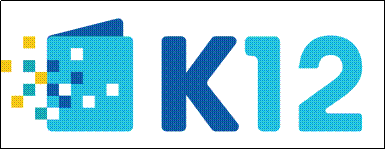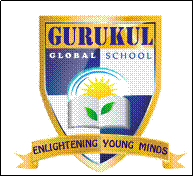



|
SUBJECTS |
CLASSES |
|
K12-MIDDLE SCHOOL-CLASS-11 |
|
Grade 11 Online High School Courses: We areregionally, nationally, and internationally accredited online private K-12 school. The high school courses provide a solid foundation for future education. Grade 11 course curriculum is structured and designed to meet the academic needs and to make high school experience successful. Students get their education through the online modality embracing modern technologies. The Grade 11 online courses are taught by experienced qualified teachers and meet the standards of education. The primary goal of all our online grade 11 course is to ensure the preparation for our high students to succeed in college and employment environment.
Online Grade 11 lessons offer insight into subjects such as English, Mathematics, Science, Social Studies, Foreign language and a set of course electives. Our school gives the flexibility and support students need to succeed academically and in every facet of their lives.
Grade 11 Online High School Courses Includes:
English: English III Mathematics: Algebra 2 or Trigonometry or Pre-Calculus Science: Chemistry Social Studies: American Government/Economics Course Elective: *Elective – select two (2) electives Foreign Language: Spanish I or II or III or French I or II
Course Elective Mass Communication Anatomy & Physiology Astronomy Zoology Career Planning Psychology Sociology Spanish III Genetics Computer Applications Foundations of Business Stress Managment Drivers Education Television Production Statistics World Cultural Geography Design Fundamentals(Photoshop) Consumer Math Creative Writing Art History 2-D Art Comprehensive 1 Theatre Environmental Science Anthropology Dance History Appreciations 1
Grade 11 English III Course Outline To help students understand the importance of historic context in literary analysis. To expose students to a variety of literary genres to further their appreciation of literature. To develop students’ vocabulary-building skills through the use of context clues and word origin/structure analysis. To help students recognize and understand the use of a variety of literary elements (terms and techniques). To enable students to respond to literature in a way that reflects intelligent and thoughtful analysis. To develop students’ reading, writing, speaking, listening and critical thinking skills so that they may function effectively in any course at university level. To help students create a body of written work (essay portfolio) that will facilitate the college application process. To provide a wide range of learning opportunities, including daily and longer-term projects, in order that students of all ability levels may be able to reach their respective potentials and be successful. To foster a classroom atmosphere that emphasizes the importance of respect for others’ opinions, beliefs and ways of being. Objectives:
The student will review and practice grammar and punctuation. The student will develop vocabulary. The student will practice different types of essay writing. The student will read critically, informatively, and for pleasure. Reading literature and informational texts:
vocabulary poetry short stories drama: Macbeth, Oedipus Rex and Antigone novel: The Great Gatsby, The Scarlet Letter, and The Awakening non-fiction essays and speeches Writing:
sentence structure literary anaylsis essay research-based essay Speaking and Listening:
novel: Wuthering Heights and Frankenstein non-fiction essays Writing: sentence structure creative writing analysis essays Speaking and Listening: presentations Language Usage: writing and editing strategies parts of speech Course Outline Introduction Course Description Understanding Plagiarism Pretest Assignment: Pretest MLA Formatting MSWord 2007 MLA Documentation updates MLA Citation MLA Incorporating Sources Writing about Literature Language: Logic & Consistency Writing: Punctuation review Reading Strategies Writing: Transitional Devices Puritan Influence Writing: Editing Strategies Research Papers Writing: Editing Strategies Analytical Writing Rubric Romanticism Listening Comprehension Non Verbal Communication Language: Style & Variety Realism & Naturalism Modernism Minority Literature Course Survey
Grade 11 Algebra II Course Outline (1.0 Credit) This course begins with a review of Algebra I topics and introduces the following new topics: matrices, complex numbers, exponential and logarithmic functions, conic sections, higher degree polynomial functions, sequences and series, and trigonometry. This course is required for students who are planning to attend most post-secondary institutions.
Algebra II is a continuation of the algebraic processes begun in Algebra I. This course includes solving equations, inequalities, matrices, graphing, functions, powers, roots, logarithms, complex numbers, polynomials, quadratic relations, sequences, series, probability and statistics. Appropriate technology is integrated into the curriculum.
Students will work with both scientific and graphing calculators throughout this Algebra 2 course. It is strongly recommended that you have at least a scientific calculator to use when completing your work. If you don’t have access to a scientific and/or graphing calculator, many are available for free online.
The Algebra II course will cover a range of algebraic topics. The over-arching topics include Operations on Numbers and Expressions, Equations and Inequalities, Polynomial and Rational Functions, Exponential Functions and Function Operations and Inverses.
By the end of the course you should be able to:
Onstrate an understanding of operations with numbers Manipulate algebraic expressions involving real and complex numbers Solve linear and nonlinear equations and inequalities Solve systems of linear equations and inequalities. Solve, translate and model linear equations Solve, translate and model quadratic equations Solve, translate and model exponential equations Solve, translate and model rational equations Solve, translate and model radical equations Solve, translate and model higher-order polynomial equations and inequalities Solve problems presented in context Represent, characterize and solve problems that involve quadratic functions Represent, characterize and solve problems that involve higher-order polynomial Represent, characterize and solve problems that involve simple rational functions Represent, characterize and solve problems involving exponential functions and logarithmic functions. Demonstrate an understanding of combinations and inverses of functions. Course Outline Introduction Introduction Course Description Completing Math Assessments MLA Formatting Word 2007 MLA Documentation Updates MLA Citation MLA Incorporating Sources Pretest Assignment: Pretest Expressions, Equations & Functions Properties of Real Numbers Solving Linear Equations Graphing Linear Equations Writing Linear Equations Solving Linear Inequalities Systems of Linear Equations Exponential Functions Polynomials Radical Functions Rational Functions Final Exam Course Survey
Grade 11 Chemistry Course Outline (1.0 Credit) Chemistry is the study of the structure and composition of matter that makes up living things and their environment. Chemistry also deals with the study of the changes of matter and the mechanisms by which changes occur. This course is recommended for college-bound students. This class cover topics such as matter, chemical reactions, solutions, and nuclear chemistry. Virtual labs and/or simple at home labs are conducted for most chapters. Lab reports must be submitted, organizing data and answering questions for the experiment.
Course Outline Introduction Introduction Course Description Handout: Periodic Table Handout: Polyatomic Ions Understanding Plagiarism Pretest Assignment: Pretest Supply List Handout: Supply List Set the Pace Handout: Pacing Guide Course Links MLA Formatting MLA Documentation MLA Citation MLA Sources Measurement The Nature of Science Science & Society Describing Matter Atomic Theory Bonding & Naming Chemical Reactions Mid-term Stoichiometry Kinetic Molecular Theory Solutions Acids & Bases Thermodynaics Energy & Forces Nuclear Chemistry Science In Our World Today Final Exam Course Evaluation
Grade 11 American Government Course Outline This course is designed to provide students with a basic knowledge of the purpose, structure, and operation of the national and state governmental systems. The primary content of study is the Federal system and its underlying principles as they are related to National, State, and local levels.
The Government course is a thought-provoking exploration of American Government and Politics. We will cover such topics as the Constitution, civil rights, interest groups, politics, voting, Congress, the Presidency, the Judiciary, laws, public policies, state & local government, and current events.
Course Outline Introduction Introduction Course Description Course Links Understanding Plagiarism Pretest Assignment: Pretest MLA Formatting MSWord 2007 MLA Documentation updates MLA Citation MLA Incorporating Sources Historical Documents Political Landscape Political Philosophy The Constitution State And Local Government Civil Liberties Civil Rights Congress National vs. State Government The Presidency The Bureaucracy The Judiciary Public Opinion Political Parties Election & Campaigns Citizenship Continuity & Changes Final Exam Course Evaluation Core Courses
Grade 11 Economics Course Outline (0.5 Credit) This course is designed to provide the student with a basic understanding of the important relationships of economics to our social and political problems. The course emphasizes the philosophy, development, and operation of our American economic system and its important influence upon the individual and society.
Interest and concern with economic issues top virtually every public opinion poll, but Gallup polls show an appalling lack of understanding of underlying economic concepts. The lack of economic literacy isn’t surprising. Seven out of ten adults in a recent survey stated that they had never had economics instruction in high school. Yet, of high school students interviewed in the survey, half reported taking steps in the previous six months to learn more about how our economy works. In addition, virtually all of those interviewed thought more economics ought to be taught in the nation’s schools. The National Council for the Social Studies recommends that all high school students take a course in economics before graduation. Nearly half of the states have just such a requirement. The new state standards for high school graduation includes testing on knowledge and skills in economics.
This economics course has two primary objectives. First of all, the class is designed to provide students with an overview of business, finance, banking, investment, government’s role in the economic system, labor-management relations, foreign trade, income inequality, and related fields. The knowledge and skills acquired will help the student make career decisions and make wise choices for further study at a college or vocational school. Students will gain insights into the advantages, disadvantages, and strategies of starting a business of one’s own.
The second major objective of the course is to provide each student with the knowledge and skills to do very well in any college or vocational school economics course. At least two courses in economics are required for most business majors and a host of non-business majors. The course is appealing to students who are interested in history, math, or contemporary issues. The course is designed for all students to be successful. For individuals wishing to prepare for the advanced placement exam, additional readings and/or assignments will be provided at the student’s option.
Course Outline Introduction Introduction Course Description Course Links Pretest Assignment: Pretest Introduction to Economics The Consumer Business Government Labor Agriculture Measuring The Economy Money And Banking Investments Taxation Monetary and Fiscal Policy Final Exam Course Evaluation
Spanish II High School Course Outline (1.0 Credit) Spanish II focuses on the past, future and compound tenses, vocabulary usage and contextual comprehension is essential. This course builds up on fundamentals learned and master in Spanish I. The same emphasis that Spanish I had in pronunciation, grammar, vocabulary, useful phrases and the ability to understand read, write, listen and speak simple Spanish will be continue in this course. Also, this course will continue with the cultural exposure to wonders found in Spanish world.
Students continue to develop proficiency in all four language skills: listening, speaking, reading, and writing with emphasis on the ability to communicate orally. They learn to function in real-life situations using more complex sentences and grammatical structures. They read material based on familiar topics and write short, directed compositions. They learn about the family structure, school life, and holidays of the target language countries.
Course Outline Welcome to Spanish II Introductory information Course Description Repaso de adjetivos y sustantivos Understanding Plagiarism Spanish Accents and Characters Spanish Links Course Links Handout: Noun and Adjective Review Assignment: Noun and Adjective Review Quiz: Repaso Cognates review Present tense review Commands/imperative La comida en el Mundo Hispano El Pretérito- Parte 1- Verbosregulares Past Tense part 2- Verbosirregulares El día de losMuertos Past Tense Part 3- the imperfect Hobbies & Pastimes Preterite versus imperfect El Carnaval El Presente Perfecto Las fiestas Navideñas Por vs para El futuro Las Fallas de Venecia El condicional ¡Estamos de fiesta! La Lectura Repaso y Examen Final Course Survey
|
